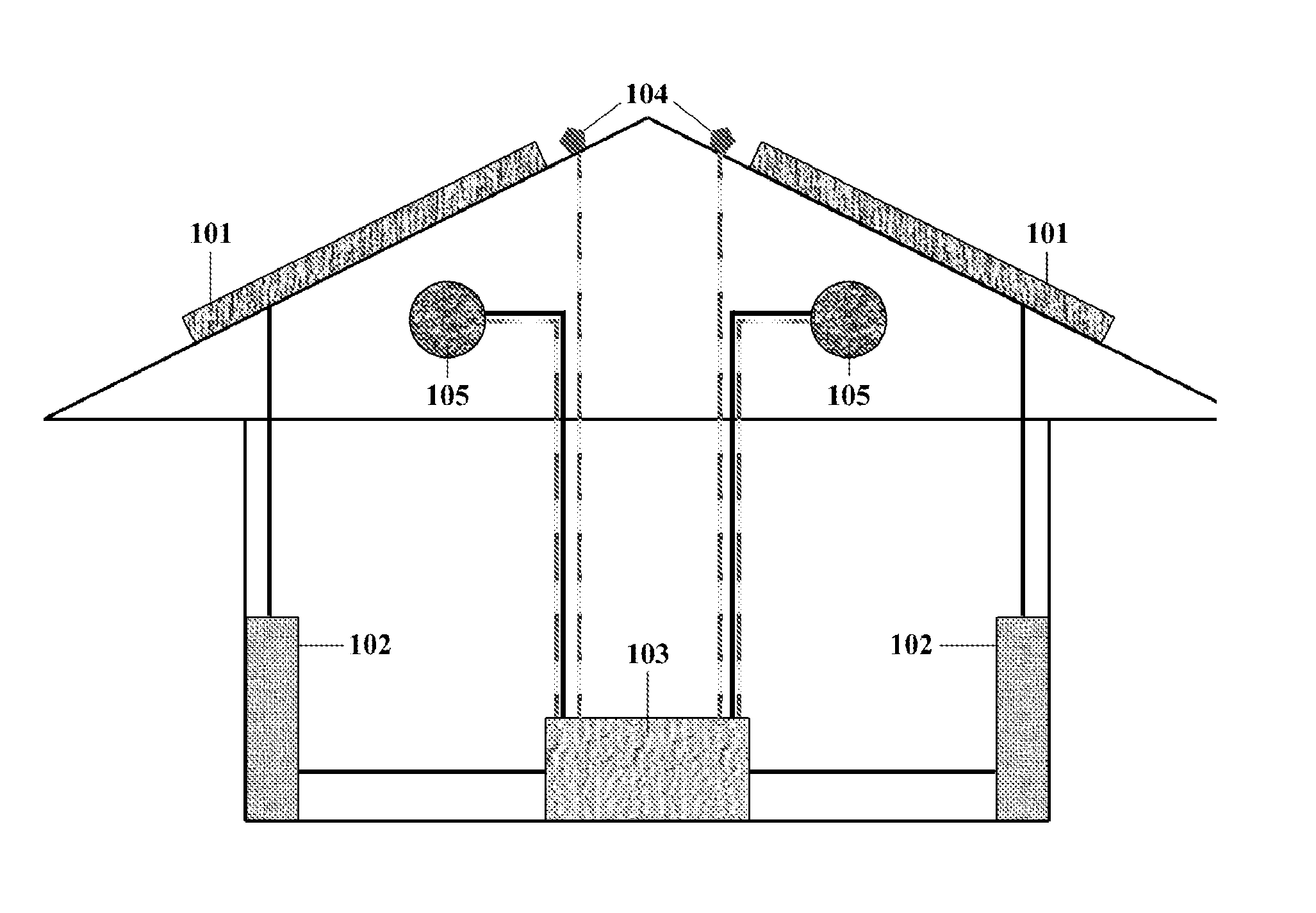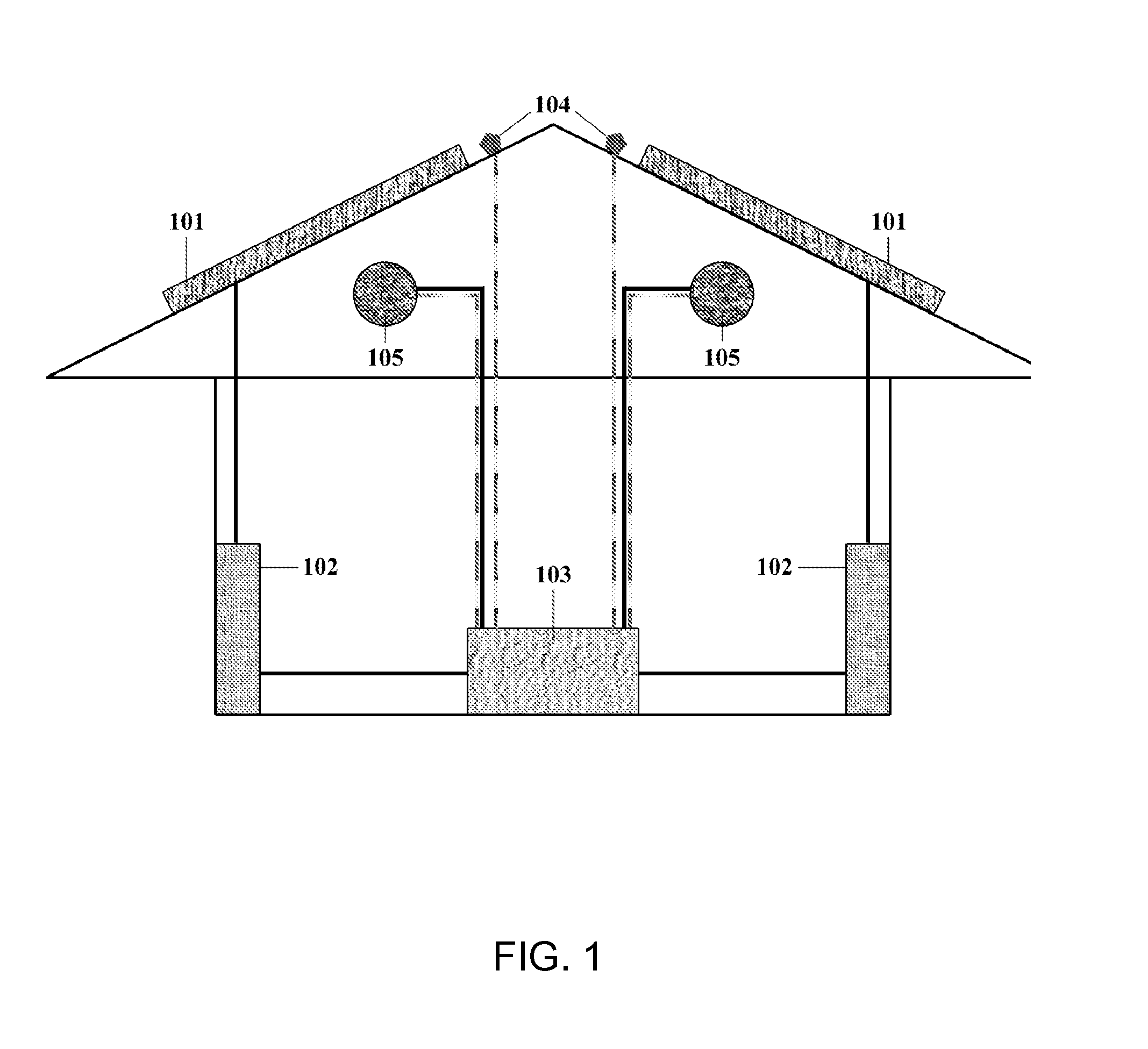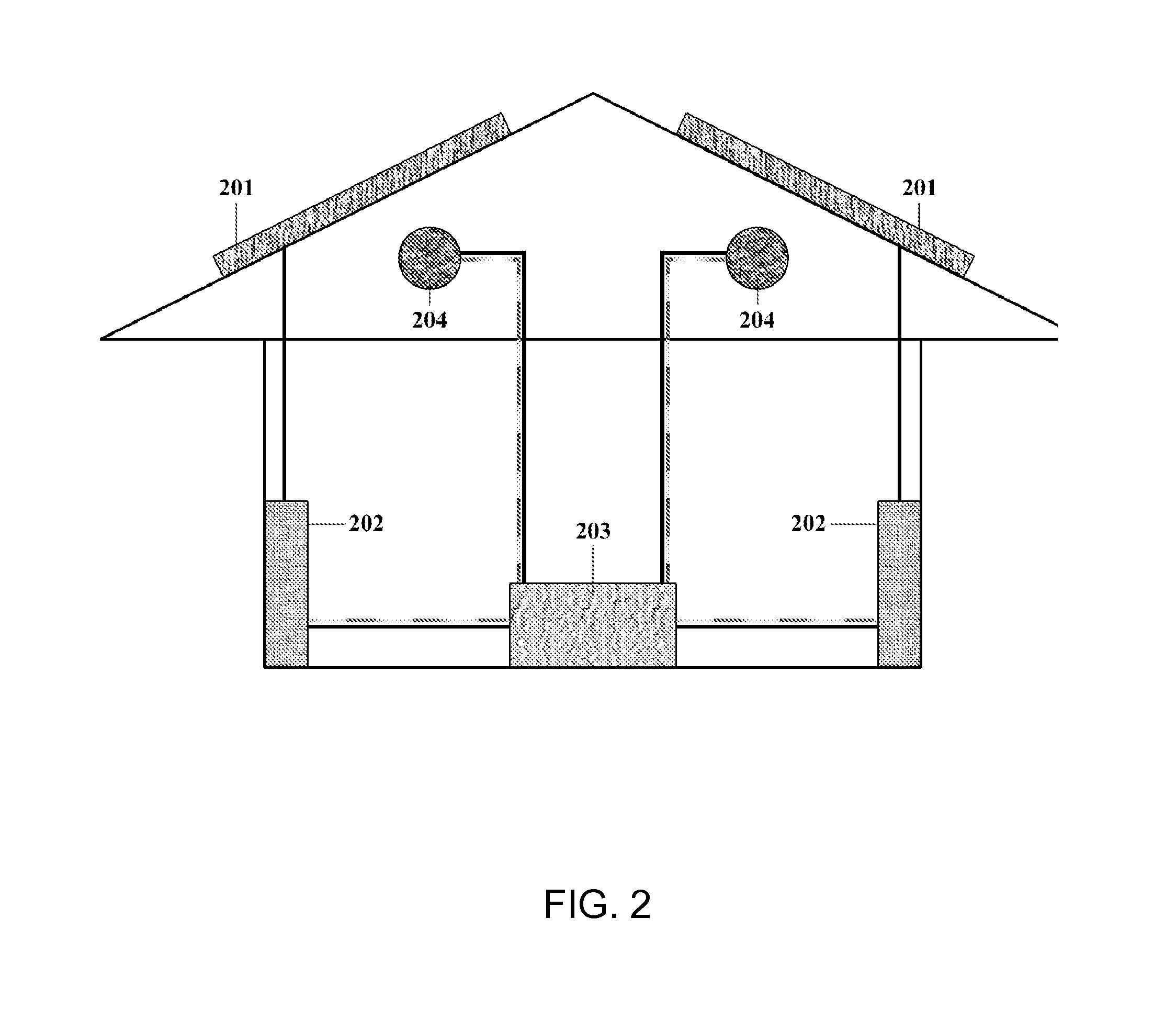Building integrated photovoltaic devices as smart sensors for intelligent building energy management systems
a photovoltaic device and intelligent building technology, applied in the direction of solar heat collector controllers, amplifier modifications to reduce noise influence, optical radiation measurement, etc., can solve the problems of large and complicated building energy management systems, and achieve the effects of large-area production capabilities, low cost, and increased flexibility and usability of technology
- Summary
- Abstract
- Description
- Claims
- Application Information
AI Technical Summary
Benefits of technology
Problems solved by technology
Method used
Image
Examples
Embodiment Construction
[0028]The present invention now is described more fully hereinafter with reference to the accompanying drawings, in which embodiments of the invention are shown. This invention may, however, be embodied in many different forms and should not be construed as limited to the embodiments set forth herein; rather, these embodiments are provided so that this disclosure will be thorough and complete, and will fully convey the scope of the invention to those skilled in the art.
[0029]Referring now to the drawings, a conventional intelligent building energy management system with discrete power generation, sensor data generation, and controllable building elements, as shown in FIG. 1, will be described in contrast to exemplary embodiments of PV devices that combine power and sensor data generation into a single unit, in order to simplify overall intelligent building energy management system, as illustrated in examples shown in FIGS. 2-5.
[0030]As explained above, FIG. 1 is a schematic view ill...
PUM
 Login to View More
Login to View More Abstract
Description
Claims
Application Information
 Login to View More
Login to View More - R&D
- Intellectual Property
- Life Sciences
- Materials
- Tech Scout
- Unparalleled Data Quality
- Higher Quality Content
- 60% Fewer Hallucinations
Browse by: Latest US Patents, China's latest patents, Technical Efficacy Thesaurus, Application Domain, Technology Topic, Popular Technical Reports.
© 2025 PatSnap. All rights reserved.Legal|Privacy policy|Modern Slavery Act Transparency Statement|Sitemap|About US| Contact US: help@patsnap.com



